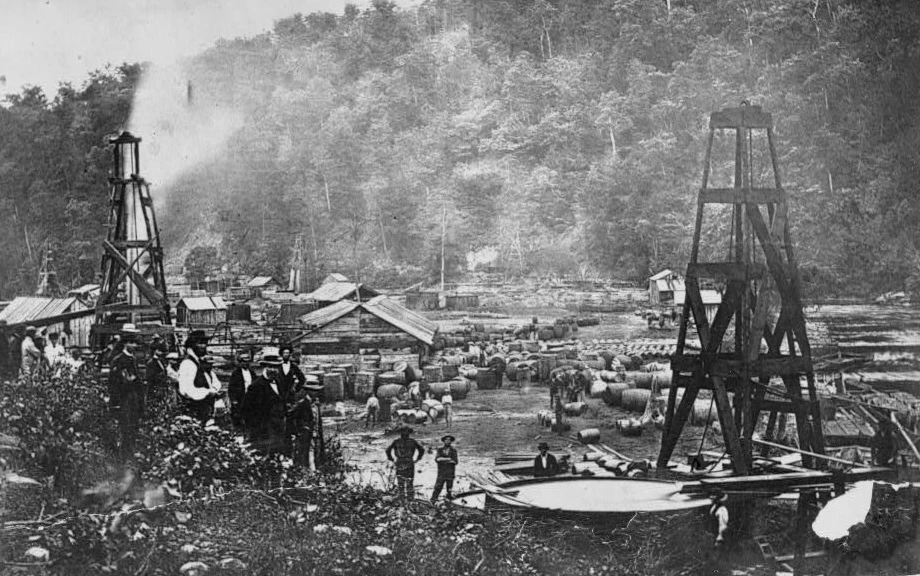Wonders of the Oil Region
Jamestown Journal (New York)
December 21, 1860

The Rush
The oil fever abates none of its interest here. In fact, no idea can be formed by a stranger of the rush at present. People are here from everywhere. Some in faultless habits of the black and blue superfine from the cities, with suspicious money-making eyes and glances. Some in homespun and beg rough hands as capital, for investment in the unctuous wealth. It is a sort of Isthmus where all are strangers, but all are intent on getting forward to the El Dorado of oil.
Extent of the Oil Territory
The oil territory on the north side of the River extends one-fourth of a mile in length and ten rods back. On the south bank the district is longer. In the bed of the river many attempts are made, and successful in each case, to find oil, but the State served an injunction on the miners.
Some wells experience a drawback from the accumulation of water in the pipes, and the incapacity of the engines to throw it out vigorously. One well pumps only water, and from this cause most probably. No wells in this place have failed – all are as promising as ever, though the most promising are not always the most productive. Claims are now selling at a very high price, and money is shaved freely on defective banks.
Principal Wells
The principal wells and their yield is moderately and safely computed as follows:
- King & Ferris, 111 feet, two months at work, 30 bbl. a day. We may remark that the depth of all the wells is about the same, 100 to 117 feet.
- Hall’s well, 20 bbl. a day.
- Jennings, 45 bbl. per day. A new well.
- Blodget’s well: This singular well has not been pumped at all yet, but has yielded spontaneously some 300 or 400 barrels.
- Thompson’s well: This well yielded spontaneously, and about 100 bbl. were conducted into a pit dug for the purpose. About a week ago he got his pipe and put in and the oil spirited up 20 feet out of the pipe, this being 15 feet in length aboveground.
- Bartlet & Mead’s well, one of the best, is pumping 40 barrels per day.
- The “Busti well” is not yet in full operation, but the show is good and they take four or five barrels daily. Between the Busti Co. and the salt well are three wells ready to operate, with excellent prospects of success. The salt well is an oil failure. The product is water and salt, and the salt would pay for working it.
- The “Garden Well,” by a Philadelphia Company, is pumping 10 to 12 bbl. per day. It is yet new.
These are all on the Tidioute side of the river. One the other side of the river it is the same thing. The Towner, Vosburg, Hequembourg and Jackson & Waters wells, are the principal. The first runs 40 barrels a day, and is the highest.
Disposal of the Oil and Pricing
The oil is all sold at the wells at a ruling price of 22 cents per gallon. Some sell lower from circumstances. No oil is sold to be delivered – it is sold on the spot. Men and companies transport it to the railroad, and sell it for 35 cents in New York and other cities.
A captain of a former whaling vessel has 22 sailors at work making barrels here at five cents a gallon, and five cents for gauging and bunging. Parties buying the oil return the barrel, so as to net the price of oil at 22 cents a gallon.
Eating and Sleeping Phenomena
Eph. Eddy is feeding this large company, eating and sleeping 60 to 100 per day. The way they lodge is a caution to habitual sleepers. A part are sent out to other houses or rooms, to what are called the “Potter’s field,” the place “to bury strangers in.”
These statements contain no exaggerations. The excitement is on the increase, and the oil fever is a reality as well as the oil itself.
– W.
